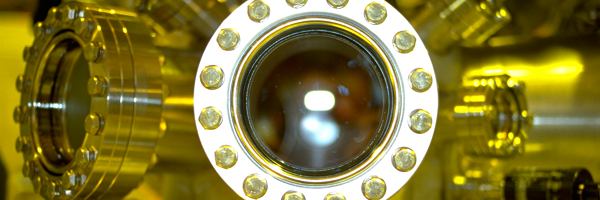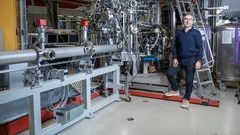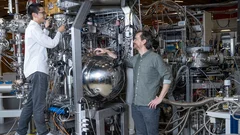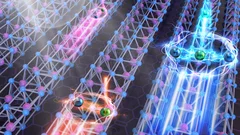SIS - X09LA: Surface / Interface Spectroscopy

The Surface/Interface Spectroscopy (SIS) beamline provides a state-of-the-art experimental set-up to study the electronic band structure of novel complex materials by spin- and angle-resolved photoemission spectroscopies. The beamline operates in the energy range from 20 to 800 eV with high flux, high resolution, variable polarization, and low high-harmonic contamination.
The beamline serves two endstations:
- ULTRA (Ultra Low-Temperature high-Resolution ARPES)
for angle-resolved photoelectron spectroscopy (ARPES) - COPHEE (Complete PHotoEmission Experiment)
for spin- and angle-resolved photoelectron spectroscopy (SARPES)
Users can apply for beamtime with the provided endstations or with their own endstation (after prior consultation with the beamline scientist).
| Energy range | 20 - 800 eV |
|---|---|
| Resolving power (E/Δ E) | 104 |
| Polarization | linear horizontal (20 - 800 eV) linear vertical (40 - 800 eV) circular left/right (50-800 eV) |
| Flux on sample (200 eV) | 2*1013 ph/s/0.1%BW/0.4 A |
| Higher order mode contamination | < 0.1 % |
| Spot size on sample (200 eV) | 50 x 100 µm2 (FWHM) |
Current Highlights and News
New materials for the computer of the future
Researchers are identifying and studying material compounds whose unique properties could lead to the development of novel types of chip.
Rich electronic features of a kagome superconductor
Spectroscopic insights into the electronic structure of a family of kagome metals bolsters understanding of exotic quantum phenomena
Mobile excitons as neutral information carriers
These quasiparticles have the potential to revolutionise electronics - if they can move. Mobile excitons have now been observed for the first time in a metal.


